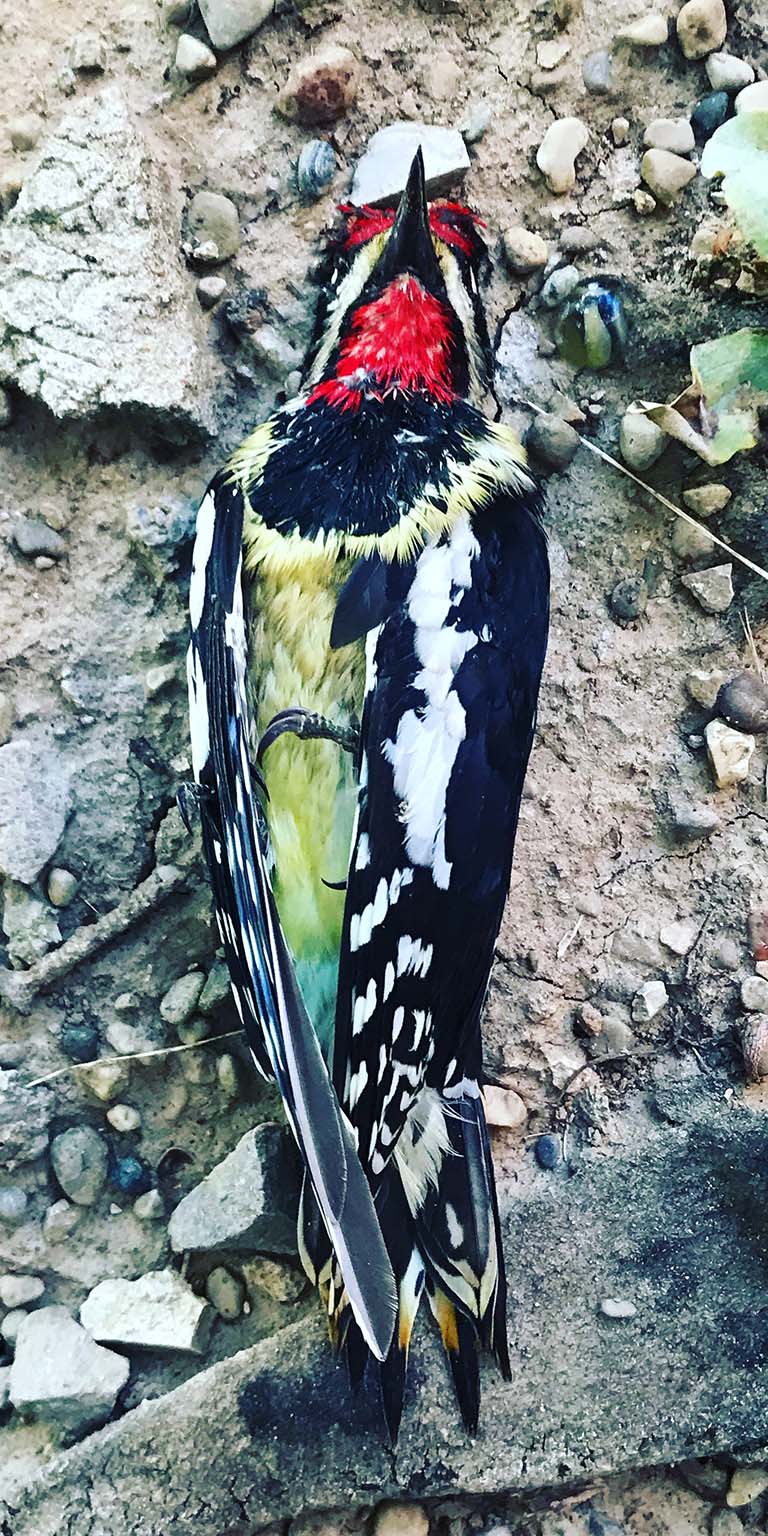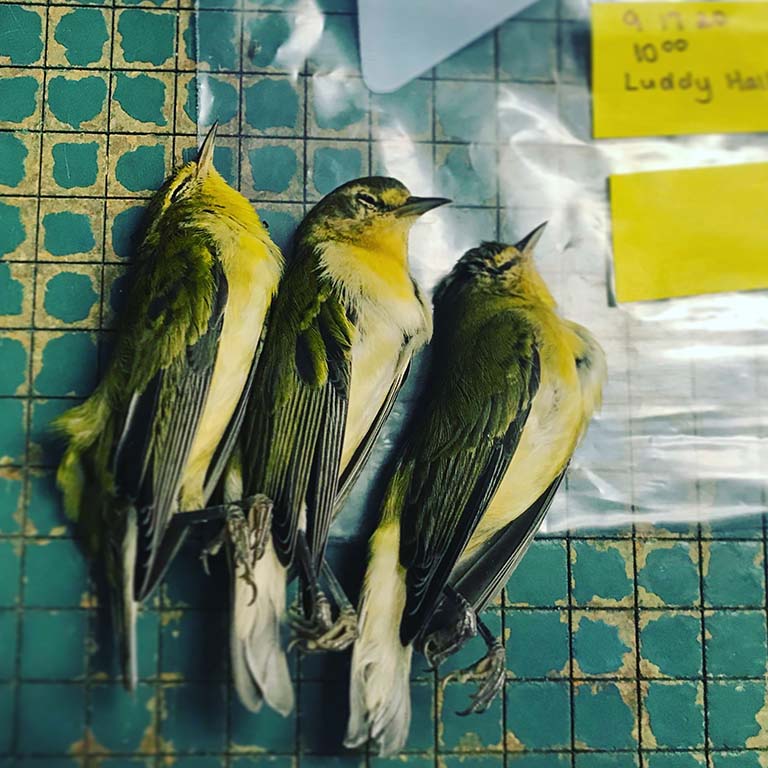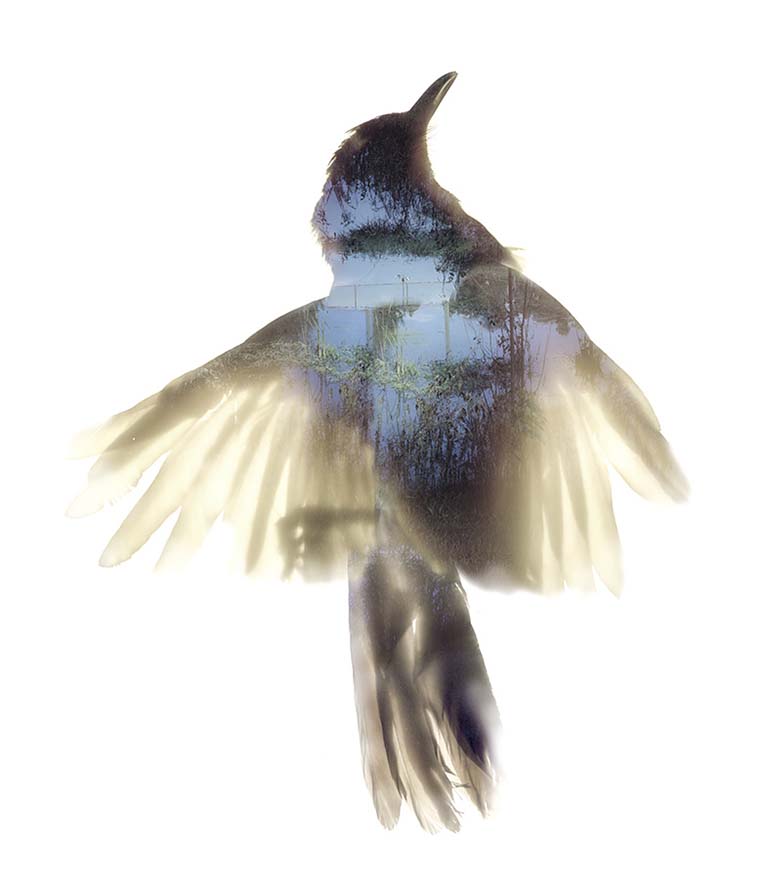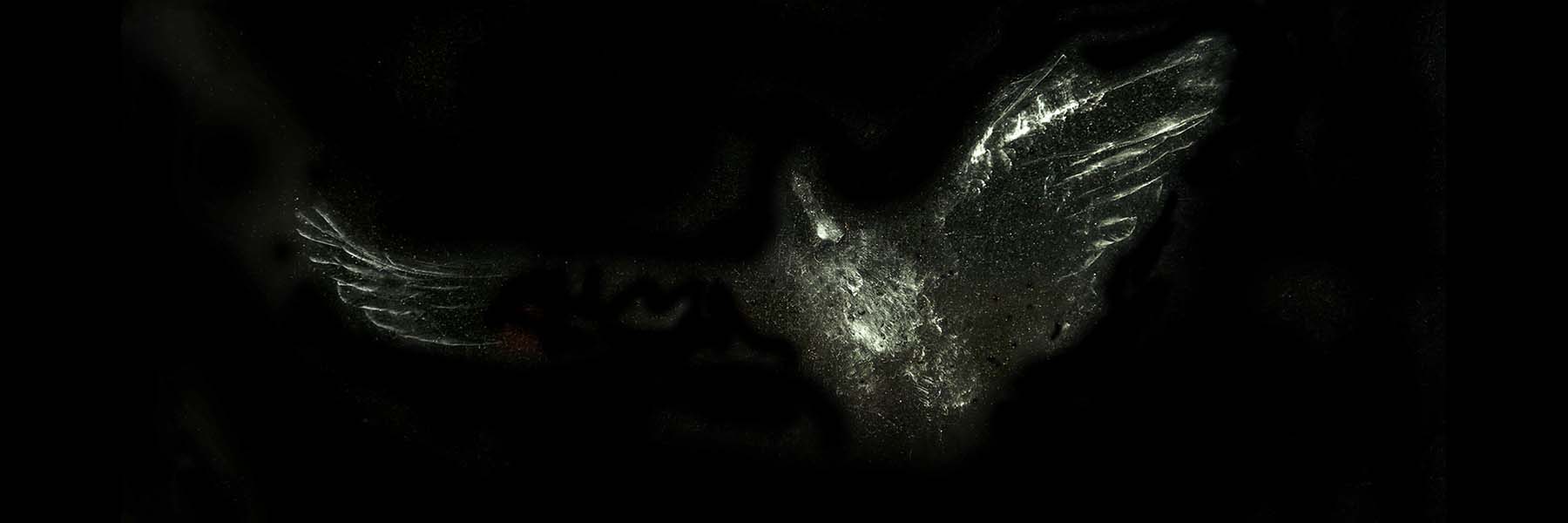BANNER IMAGE: Ghost bird. Special photography techniques allowed Roger Hangarter to obtain from the glass a "ghost image" of a bird, most likely a cardinal, that crashed into the window. Hangarter believes this bird was fortunate and survived the strike. The wing position suggests the bird may have "put on its brakes" before hitting the window; Hangarter did not find a body. | Photo by Roger Hangarter
Window strikes
Staggering numbers of birds run into tall buildings while migrating and are killed, posing a serious threat to their populations. Buildings on university campuses, often lit through the night, also harm birds. The lights disorient birds during their migration and can also attract them, leading to often fatal avian window strikes. Integrating the center's research priorities into their project, MCB scientists Sarah Wanamaker and Bryce Himebaugh are quantifying the problem and devising technology to increase the accuracy of the estimates in hopes of fostering policy change on light regimes.
Making IU Bloomington safer for birds
Researchers: Sarah Wanamaker, Bryce Himebaugh
Collisions with buildings are one of the primary causes of bird mortality. By some estimates, window strikes kill over 100 million birds per year in the U.S. alone. Bird-window collisions can occur during the day (because birds cannot see glass) and also at night (because birds are attracted to the relative brightness of lighted buildings); they pose a disproportionate risk to migrating birds. Window strikes are particularly harmful to avian populations because they can kill otherwise healthy birds.
Like cityscapes, college campuses pose a greater risk for window strikes because they are home to clusters of tall buildings and many large windows. Furthermore, the interior lights of campus buildings are often left on continuously. This combination of factors creates a particularly dangerous obstacle for birds and needs to be addressed.
Sarah Wanamaker and her team of undergraduate students conduct surveys of fatal window strikes on IU Bloomington’s campus during fall and spring migration. Sarah is also collaborating with IU researcher and engineer Bryce Himebaugh to develop a novel sensor to passively detect window strikes. These sensors will be mounted on window panes and will trigger in response to a bird strike.



(1) One of the three Yellow-bellied Sapsuckers (a species of woodpecker) found by the team monitoring for avian window-strike fatalities on the IU Bloomington campus during fall 2020 and spring 2021 migration. (2) A White-breasted Nuthatch did not survive a window-strike on the IUB campus. (3) These three warblers were window-strike victims at IU's Luddy Hall on the north side of the Bloomington campus in Sep. 2020. Photos courtesy of Sarah Wanamaker
The goal of this study is to generate data that will be used to raise awareness on the issue of bird-building collisions. We also hope to raise money that will allow us to retrofit high-risk windows with visible patterns that allow birds to see glass, thereby creating a bird-safe campus. Working with our partners, such as the local chapter of the National Audubon Society, our mission is to prevent bird deaths and save energy by promoting bird-safe buildings and reducing nighttime lighting.

About the "dwellscape" image
When Kate Houlne "started finding dead birds everywhere"—neighbors' houses, along the road, and mostly as window-strike victims at the International and Global Studies building on the IU Bloomington campus—she photographed them. Using various film exposure methods and digital techniques, Houlne melded fragments of landscape images with the images of the fragmented (broken) bodies of the birds to produce such captivating impressions as "dwellscape: shared fragmented environment through the body of a Brown Thrasher."


